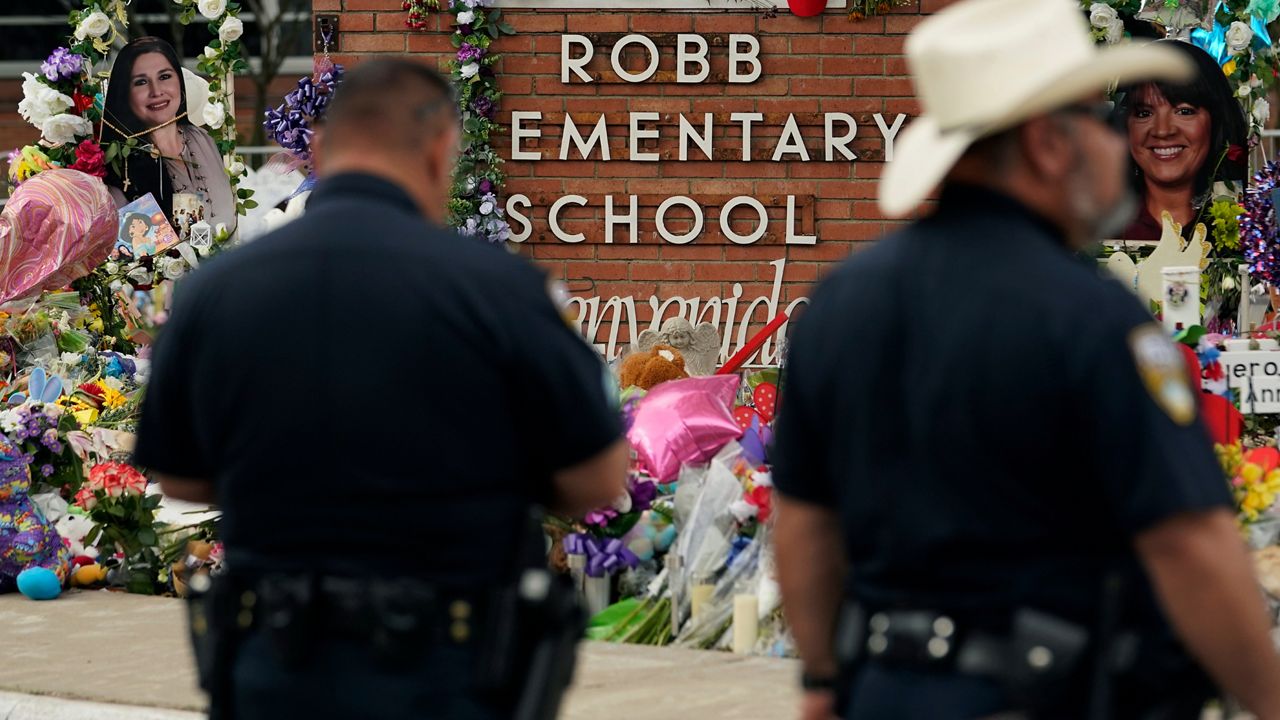Tuesday’s Senate hearing on the mass shooting at a Uvalde elementary school identified at least a half-dozen factors that led to increased vulnerabilities at Robb Elementary School.
Director Steve McCraw of the Department of Public Safety gave almost five hours of wrenching testimony to the Senate Special Committee to Protect All Texans. McCraw updated the minute-by-minute timeline of the shooting and matched that timeline with 911 communications.
Several points McCraw made were new: The door to the classroom where the shootings occurred was open, but no one attempted to open the door without a key. Enough armed law enforcement officers were in the school's hallway to “neutralize the subject” within three minutes of building entry. And the decisions of local school district police chief Pete Arredondo to hold off on storming the classroom were “an abject failure.”
During a question-and-answer session with senators, Sen. Judith Zaffirini, D-Laredo, pressed McCraw on lessons learned from the tragedy that should guide lawmakers. Here are some of the points that McCraw made from the initial DPS review of the situation:
The four-foot perimeter fence at Robb was inadequate for preventing access to the campus, McCraw said. Visitors, staff and students should be guided to one or more controlled entrances. McCraw also mentioned the use of badges to enter or exit the building. After the mass shooting at Columbine, many school districts implemented badges for students and staff; Robb Elementary had not.
“This didn’t make any difference in this situation, but it is a concern that was brought out,” McCraw told the senators.
DPS counted 40 doors across eight buildings on campus, McCraw said. The exterior doors lacked wired safety glass in its glass panes next to the door, making it easy for someone to break a pane and reach a lock. The exterior doors also lacked strike plates and dead bolts.
The interior doors on the campus did have wired safety glass, McCraw said. Those doors, however, locked from the outside and not the inside. The committee had an extended discussion about the locking mechanisms on the doors. The lack of controlled access to the campus made these doors even more vulnerable. The campus also had a number of portable buildings, which could be reached without going through the campus.
Later in the hearing, Commissioner Mike Morath told the senators the Texas Education Agency will require school districts to conduct a review of all exterior and interior doors on school campuses this summer.
A campus or building often will have a Knox box for the building’s master keys for first responders. Keys are kept in a small safe. That safe is opened with a single master key carried by fire or police personnel.
“You could have three master keys, but they’re all kept in one place,” McCraw said.
Robb did have a Raptor system, which sends out immediate alerts to the school and parents, McCraw said. But it lacked a duress system, which would be a panic button in every classroom that a teacher can press in case of an emergency.
Gov. Greg Abbott has suggested adding duress systems on every school campus.
Conversations between law enforcement and the 911 center indicated some confusion about room numbers and which rooms were involved in the shooting incident. Law enforcement doesn’t need blueprints, but it does need a correct diagram of the building, McCraw said.
“The challenge is some of these diagrams are correct, but some are wrong,” McCraw said. “One that was wrong was used to say, ‘Hey, what about a sniper location?’”
Because the map was wrong, law enforcement failed to come to the right conclusions, he said.
Pete Arredondo, the police chief of the Uvalde Consolidated Independent School District, didn’t have a radio on him when the incident at Robb occurred. That radio, even if he had it, couldn’t be used on the Robb campus; the concrete and walls of the campus prevented radio reception, McCraw said.
That signal can, and should, be expanded and enhanced. McCraw also mentioned a lack of communication between departments — such as the lack of communication between police and fire in New York City on 9/11 — but didn’t elaborate on the specifics at Uvalde.
Zaffirini also mentioned that cell phone coverage can also be a problem in towns along the border of Texas and Mexico. Children and a teacher called 911 in the classroom, reaching the Uvalde police department. But along the border, that call could go to a Mexican carrier.
“If you’re in a school that is right on the border, you might look at your cell phone and see a message that says, ‘Welcome to Mexico,’” Zaffirini said. “Service in Mexico takes it over because it’s more dominant than service on the American side.”
Additional audits and reviews of the Uvalde situation will be conducted by the Texas School Safety Center and others that have a specific expertise in school settings, McCraw said.



